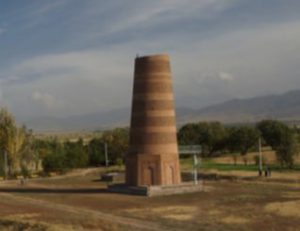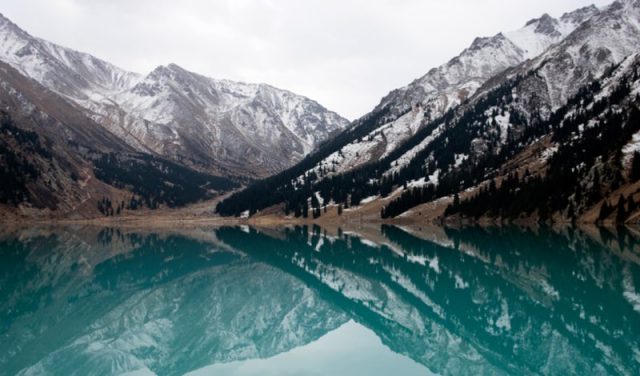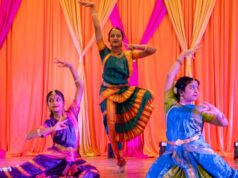Abhimanyu Narayanmoorthy and his friends wanted a trip that was off the beaten track, somewhere special. With only a short timeframe to spend away they decided on Central Asia, colloquially referred to as “the Stans” because it’s made up of the former Soviet republics of Kazakhstan, Kyrgyzstan, Tajikistan, Turkmenistan, and Uzbekistan. Abhimanyu begins his story, explaining how the decision was made.
Setting out and the gates of Central Asia – Kazakhstan
Choosing a destination for travel can always be a challenge especially when one has only two to three weeks of time. My university friends and I wanted to take a journey away from popular destinations or even destinations that are getting popular now (like Phu Quoc). After pondering for a while, we finally chose to travel the five Stans.
Vast open plains, scenic mountains and a region immersed in history makes this region an interesting choice for the serious traveller. Truth be told, safety and ease of obtaining the visa were two main considerations to finalise the countries for travel. Kazakhstan provides ‘visa on arrival’ if one’s stay is up to three days. Air Astana needs to be informed in advance. Uzbekistan and Kyrgyzstan issues e-visa even for Indian passports.

First stop of the tour was Almaty in Kazakhstan. Almaty city is located near two gorgeous national parks – Altyn-Emel National Park and Ile-Alatau National park. Time constraints let us explore only the Big Almaty lake situated at a height of 2511m in the Ile-Alatau range 20 km to the south of the centre of Almaty.
Crystal clear water and scenic mountains makes this place a must visit place if you ever visit Kazakhstan. As this is the only source of drinking water to the city of Almaty, swimming in the lake is prohibited. Entry fees to the lake is around 400 KZT which translates to 1 USD. Another interesting spot to visit is the Kok-Tobe which gives an aerial view of the city. This spot has good outdoor entertainment as well as restaurant options.
The capital brings a vibrant start to Kyrgyzstan
Next stop of our trip was the capital city of Kyrgyzstan; Bishkek which is a vibrant stopover or travellers along the Silk Route. We began the day by exploring the colourful Osh Bazar which had a huge spread of spices, dry fruits and farm-fresh vegetables.
Another must visit in this city or for that matter any city of the Soviet Union is the Tsum (also known as GUM). A relic of the Communist ideology the Tsum was the central marketplace in major cities of the Soviet Union. It served not only as the central marketplace but also distribution centre for all the produce. The main government centre as well as the Ala-Too square should be visited in the evening for its spectacular display of lights.

The official road trip began as we left Bishkek the next morning and our first stop was Tokmok. It is situated in the centre of the Chuy valley and a prized possession of medieval conquerors. Landmark of this region is the Burana Tower, a minaret built in the 11th Century bearing resemblance to the Qutub Minar. The area is surrounded by grave markers and was believed to be the capital city in the 8th-12th century period.
Any road trip in Kyrgyzstan cannot be undertaken without going around the Lake Issyk Kul; an endorheic lake in the northern Tian Shan mountain range. It is the 7th largest lake in the world with a catchment area of around 16000 sq kms. Highlight of the day was to have lunch near the shore at Choplon Ata, one of the stopovers along the lake and take a dip in the cool water later.
The day concluded as we stopped at Karakol, 4th largest city of Kyrgyz Republic and a stone’s throw distance from the western border of China. Must visit attractions of this area are the Russian Orthodox Holy Trinity church as well as the Dungan Mosque. Karakol is situated close to the Altyn-Arashan range a picturesque forest landscape. Hiking and climbing enthusiasts can summit the peak in around 2-3 days. This range is absolutely gorgeous and filled with streams and rivulets that will brighten anyone’s day. The pine trees along the path add to the natural beauty of this range and provide ample shade just in case anyone want to catch forty winks during the trek!
Yurts, valleys, a walnut forest, and a waterfall
Next stop on the way was the trek to the Barksoon Valley. This spot competes with the Altyn-Arashan range with respect to a scenic landscape. Yuri Gagarin the Russian astronaut chose this location as a preferred vacation spot making it popular. There is bust of him that can be found at the location. There is an absolute gorgeous waterfall that can be accessed after a half hour trek. Another must visit spot is the Jeti Oguz gorge a striking resemblance of the Grand Canyon.

One of the highlights of this trip especially in Kyrgyzstan was staying at guest houses and in yurts (made of skin and felt, found all over this region). The host families were truly hospitable, taking all efforts to make our stay as comfortable as possible.
After a night halt at Bishkek we proceeded to the western border of Kyrgyzstan in one of the most arduous road trips ever. The 600km road trip from Bishkek to Arslanbob took around 13 hours and we passed by a maximum altitude of around 3000m.
Along with the majestic Lake Toktogul the entire route was spread with majestic views of valleys. Finally, we reached our abode for the night in Arslanbob, a border town between Kyrgyz and Uzbekistan. This town is also home to the largest walnut forest in the world and produces around 1500 tonnes per year. It is recommended to spend around 2-3 days in case you would like to be totally rejuvenated and showered with hospitality and warmth. A special feature of this region is the Community Based Tourism spread across all over. Local families convert their homes into guest houses and their hospitality and warmth is undoubtedly unmatched!
The captivating history of Uzbekistan
The concluding leg of this trip was Uzbekistan, another country deeply rooted in Islamic history. It also holds a lot of historical significance pertaining to India as Tashkent, the capital city was place of demise of former Prime Minister Shri Lal Bahadur Shastri. Uzbekistan is also significant as Babur, the Mughal Emperor hails from the Andijan Valley located at the east of Uzbekistan. There is a huge commemorative statue of Emperor Babur on the way to Tashkent namely – Babur Park.
After a night halt at Tashkent we proceeded to the first destination in Uzbekistan, Samarkand. The city is noted for being an Islamic centre for scholarly study. In the 14th century it became the capital of the empire of Timur (Tamerlane) and is the site of his mausoleum (the Gur-e Amir). The Bibi-Khanyam Mosque, rebuilt during the Soviet era, remains one of the city’s most notable landmarks. Samarkand’s Registan square was the ancient centre of the city and is bound by three monumental religious buildings. The city has carefully preserved the traditions of ancient crafts: embroidery, gold embroidery, silk weaving, engraving on copper, ceramics, carving and painting on wood.
Modern Samarkand is divided into two parts: the old city, and the new city developed during the days of the Russian Empire and Soviet Union. The old city includes historical monuments, shops and old private houses, while the new city includes administrative buildings along with cultural centres and educational institutions.
We were fortunate to get a glimpse of a fantastic light and sound show at the Registan Square that was specially arranged for a few dignitaries. The show lasted for almost two hours and gave a great timeline of the evolution of the Timurid empire. If anyone does get a chance to watch it, it must not be missed.

The last stop, albeit a short stop was Bukhara. Bukhara is rich in historical sites, with about 140 architectural monuments. People have inhabited the region around Bukhara for at least five millennia, and the city has existed for half that time. Located on the Silk Road the city has long served as a centre of trade, scholarship, culture, and religion. UNESCO has listed the historic centre of Bukhara, which contains numerous mosques and madrasas as a World Heritage Site. It is a city filled with mausoleums and mosques. Notable among them are Kayan Minaret, Kalan Mosque, Mir-i-Arab Madrassah Char Minar amongst a few. All the mausoleums and structures here have a distinctive mosaic style that can be found all over this region.
We headed back to Tashkent after a ten-hour long ride from Bukhara to fly back. This trip taught us a lot about perceptions and preconceived notions that only block us from experiencing new delights and joys in life. I am fortunate to have had this experience and cannot wait to go back to this region once again.

Abhimanyu Narayanmoorthy
Abhimanyu is a banker by profession who is passionate about travelling. Having spent close to a decade in HK, it has given him the opportunity to explore in and around Asia. If you do not find him at the airport you might find him at one of Hong Kong’s scenic trails or at the harbour planning his next harbour swim.

![Powerful Pride documentary Legendary Children [All Of Them Queer] streaming very soon](https://globalindianstories.org/wp-content/uploads/2025/06/Legendary-streaming-release-featured-238x178.jpg)



![Powerful Pride documentary Legendary Children [All Of Them Queer] streaming very soon](https://globalindianstories.org/wp-content/uploads/2025/06/Legendary-streaming-release-featured-100x75.jpg)

